Matching wall and floor tiles create a cohesive look that adds visual interest to any bathroom; however, getting it right does require some planning. Here’s our guide on how to match bathroom floor and wall tiles – from deciding on the patterns, shapes and sizes to knowing who to call when you need help with installation – so that your new space is both beautiful and functional!
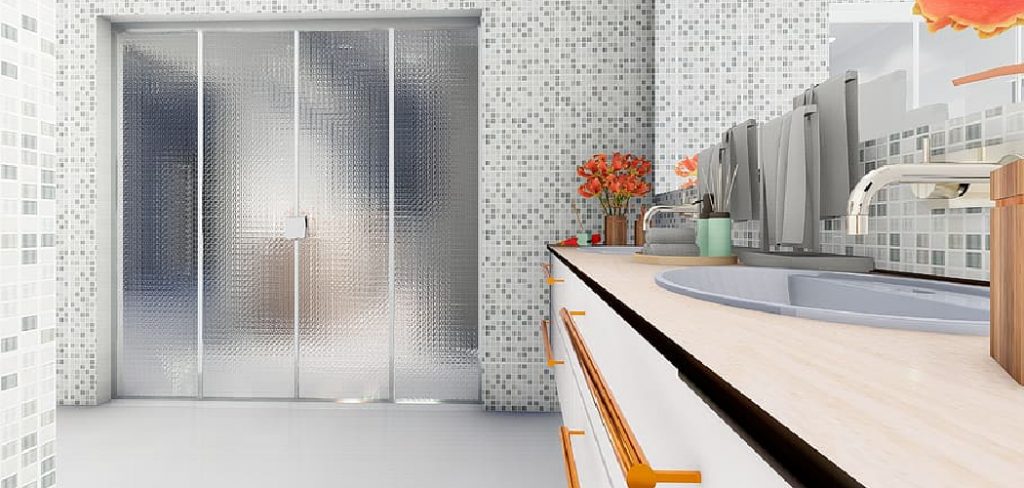
If you’re considering renovating your bathroom, matching the floor and wall tiles can be a great way to create a stylish look. Choosing coordinating patterns for both surfaces is an easy-to-learn process that will give your bathroom an eye-grabbing finish that doesn’t break the bank.
Whether you opt for classic brick bond style or something more colorful and contemporary; this post will cover all aspects of how to match bathroom floor and wall tiles, from ordering supplies to installation tips. So read on if you’re looking for some inspiration!
Why May You Want to Match Bathroom Floor and Wall Tiles?
1. To Create a Harmonious Look
Matching your bathroom floor and wall tiles creates a seamless, unified design in the room. This can make for an inviting aesthetic that’s pleasing to look at and easy on the eyes. Also, when the floor and wall tiles are in sync with one another, they can create a look that is both classic and timeless.
2. To Enhance Visual Flow
Matching your bathroom floor and wall tiles allows for a smooth transition between the two surfaces. This helps to enhance the visual flow in the room by making it feel more open and larger than it actually is. Furthermore, matching floor and wall tiles can also help to break up a room and create distinct zones within the space.
3. To Create a Balance
Matching bathroom floor and wall tiles helps to establish balance in the room. This is especially important when it comes to color; if one color is too overwhelming or dominant, it can throw off the overall look of the space. By matching the floor and wall tiles, you can make sure that colors are balanced within the room.
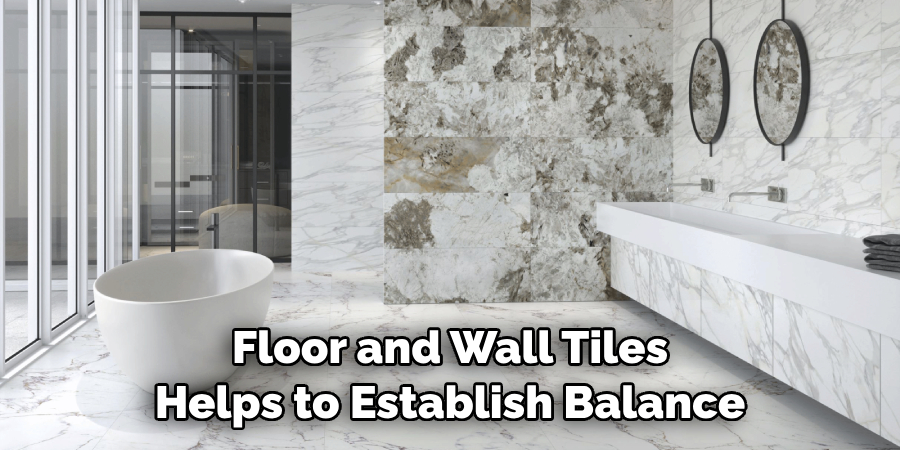
Overall, matching your bathroom floor and wall tiles can be a great way to create a cohesive look in the room. It helps to enhance visual flow, create balance, and bring harmony to the space overall. When done right, this can result in an inviting bathroom that is both beautiful and timeless.
10 Tips on How to Match Bathroom Floor and Wall Tiles
1. Choose Tiles of the Same Size for Both the Floor and Walls
One of the most important tips for matching bathroom floor and wall tiles is to make sure you’re using the same size tile for both. This will create a uniform and cohesive look, which instantly makes your bathroom look more polished.
2. Try Using the Same Color or Shade
Using the same color or shade of tile on both the walls and floors can also help you achieve a more coordinated look. This is especially true if you’re using neutral colors like whites, grays, and tans.
3. Mix Textures for a Unique Look
If you want to create something unique, try mixing textures of tile on your walls and floors. For example, pair glossy tiles with a textured finish for an interesting contrast that adds visual interest.
4. Use Contrasting Colors for a Dramatic Look
If you’re going for a more dramatic look, consider using contrasting colors between the floor and wall tiles. This could be anything from white walls with black floors to light gray floors with navy blue walls. Also, don’t be afraid to play around with different shapes and patterns.
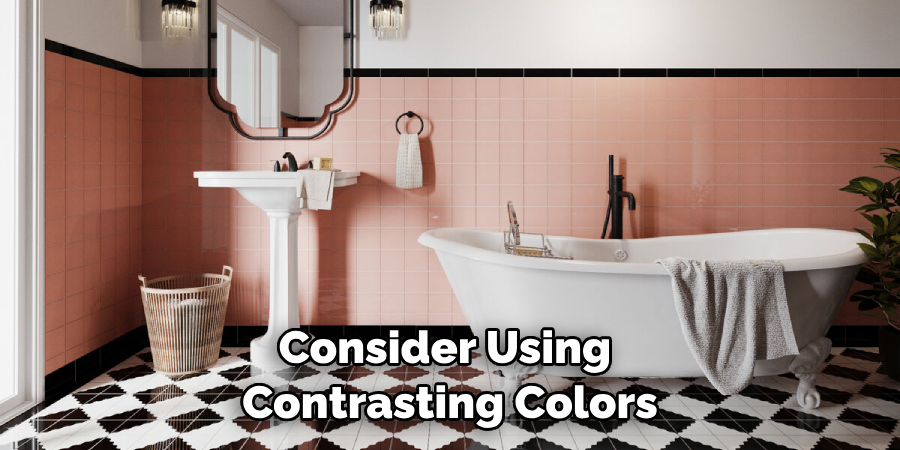
5. Select a Neutral Color Scheme
If you want the tiles in your bathroom to match without being too overwhelming, selecting a neutral color scheme is key. Stick to neutrals like white, tan, gray, or black for both the walls and floors so that they all blend together nicely.
6. Consider a Monochromatic Color Scheme
For a more modern take on matching bathroom floor and wall tiles, consider using a monochromatic color scheme. This means using different shades of the same color throughout. For example, light gray floors with darker gray walls or beige floors with creamy white walls.
7. Include Different Patterns for Visual Interest
If you want to add some visual interest to your bathroom, consider including different patterns within the same color. For instance, a patterned tile on the walls and a solid tile on the floor in matching colors can create an eye-catching look.
8. Use Complimentary Colors for a Cohesive Look
Another way to make sure your bathroom floor and wall tiles match is by using complementary colors. This means picking a color palette that has two or more hues that are opposite each other on the color wheel and then mixing them together in your tile selection.
9. Choose Tiles with a Similar Finish
When you’re matching bathroom floor and wall tiles, it’s important to make sure they have similar finishes, too. For instance, if you’re using glossy tiles on the walls then make sure your floor tile has a similar finish as well.
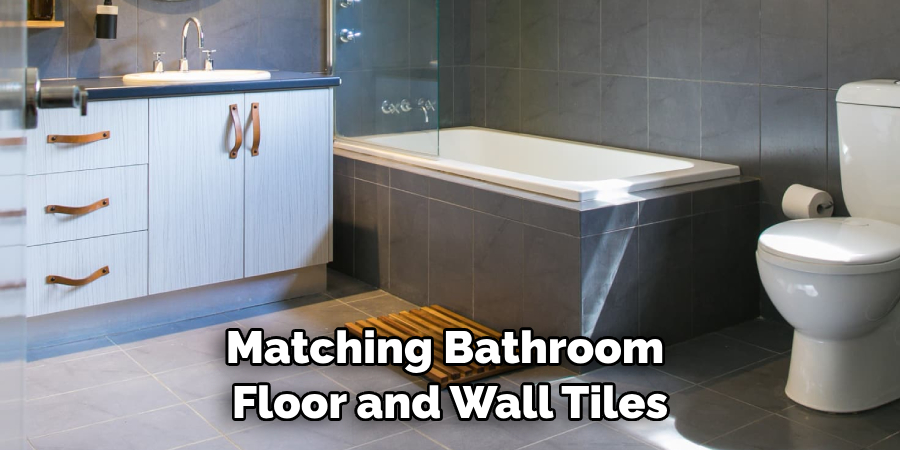
10. Opt for Natural Stone Tiles
If you want to create a classic look in your bathroom, natural stone tiles are the way to go. From marble to granite and travertine, there are endless options when it comes to natural stone tiles. Plus, these materials tend to look better with age and require minimal maintenance.
Overall, there are a variety of tips and tricks you can use when matching bathroom floor and wall tiles. From selecting the same size tile to choosing complimentary colors, there’s sure to be an option that works for your space. So don’t be afraid to experiment and find the perfect look for your bathroom. Good luck!
Frequently Asked Questions
What Precautions Should I Take When Matching Bathroom Floor and Wall Tiles?
When matching bathroom floor and wall tiles, there are a few precautions to take into consideration. First, it is important to choose a tile material that is compatible with the environment of your bathroom.
Porcelain or natural stone should be used for bathrooms in order to prevent mold growth and water damage. Additionally, make sure to use grout that matches the color and texture of your tiles. Finally, if you are mixing different patterns or colors of tiles, try to blend them together using complementary shades and textures.
What Are Some Tips For Matching Different Types of Tiles?
When combining different types of tiles in a bathroom setting, it is important to keep the scale of the tiles in mind. For example, small wall tiles can be paired with larger floor tiles to create visual interest and texture.
Additionally, try to use different shades of one color for a unified look. When selecting materials, choose ones that have similar textures or finishes to ensure they match well together. Finally, make sure to mix up patterns if you are using more than one type of tile. This will help to create a unique and interesting design that ties the whole room together.
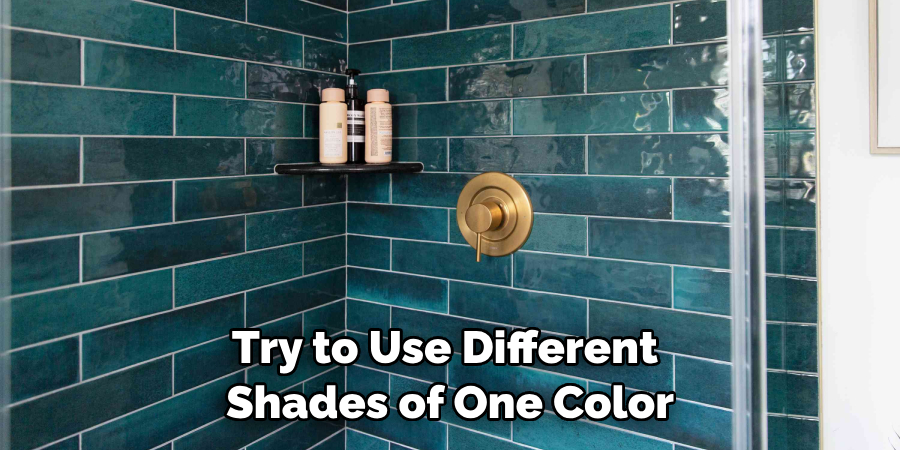
Are There Any Unique Design Ideas For Matching Bathroom Floor and Wall Tiles?
Yes, there are plenty of unique design ideas for matching bathroom floor and wall tiles. Consider using large format tiles on the walls as this will make your bathroom look larger and more modern.
For a bolder design, you can mix different shapes and sizes of tiles in the same color tones to create an eye-catching pattern. If you want a softer look, try pairing light colors with subtle textured tiles for a serene atmosphere. Finally, consider using metallic or glass accents to add sparkle and shine to your bathroom design.
Can I Use Different Grout For My Floor and Wall Tiles?
Yes, you can use different grout for your floor and wall tiles. In fact, it is often recommended to use a darker shade of grout with floor tiles to create contrast and definition between the two types of materials.
However, if you are using light-colored tiles or want a subtle look, try opting for a grout color that is close to the shade of your tiles. Ultimately, it is up to you to decide which grout type and color will best complement the overall design of your bathroom.
Conclusion
Now that you’ve taken the time to consider all of these factors about how to match bathroom floor and wall tiles, and understand the elements involved in choosing bathroom floor and wall tiles, you can move forward with confidence in making this essential decision.
With an understanding of your own personal style, as well as the necessary functionality of your bathroom’s tiles, it should be a breeze for you to select the perfect tiles that will work together harmoniously.
After all, when it comes to tiling bathrooms, no one wants a mismatch! Armed with this knowledge, you can trust yourself to create a beautiful and unified look—one that will perfectly express your unique sense of style. Best of luck in designing your dream bathroom!